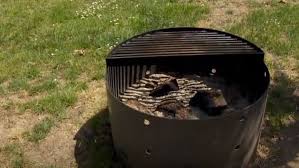This ban covers all state-managed parks and forestlands east of Interstate 5, and includes prohibitions on fires in designated fire rings. The public can also anticipate restrictions in other areas based on fire danger. Restrictions may increase as fire danger rises in other parts of Oregon and will remain in place until conditions moderate.
State agencies strongly encourage checking fire danger levels and associated restrictions in a given area before traveling and daily during a visit.
With hot, dry weather expected to continue and no relief forecasted in the foreseeable future – and several large fires on Oregon’s landscape – the step of banning campfires east of Interstate 5 was deemed a necessary measure to protect life and property in what is already a very challenging and dangerous fire season.
Particularly in times of elevated fire danger, maintaining capacity to respond quickly to new fire starts is critical. Humans cause on average 70% or more of fires in Oregon, and these additional restrictions are intended to help reduce the number of human-caused fire starts. This will allow firefighters to focus on the existing large fires as well as new blazes that may emerge.
“We are seeing record-low humidity in much of the state, and as forest fuels dry out there is tremendous potential for fire to establish and spread quickly,” Oregon State Forester Nancy Hirsch said. “With months of fire season left, this measure will help us prevent one of the most common types of human-caused fires, which reduces the risk to our communities and natural resources.”
“Every park visitor can do their part to protect the landscapes we all love,” Lisa Sumption, Oregon Parks and Recreation Department Director said. “Help reduce fire risk by bringing meals that don’t require heating or cooking.”
For more about Oregon State Parks and fire restrictions, go to https://stateparks.oregon.gov/ and here is a good resource for updates about wildfires throughout the state https://wildfire.oregon.gov/


